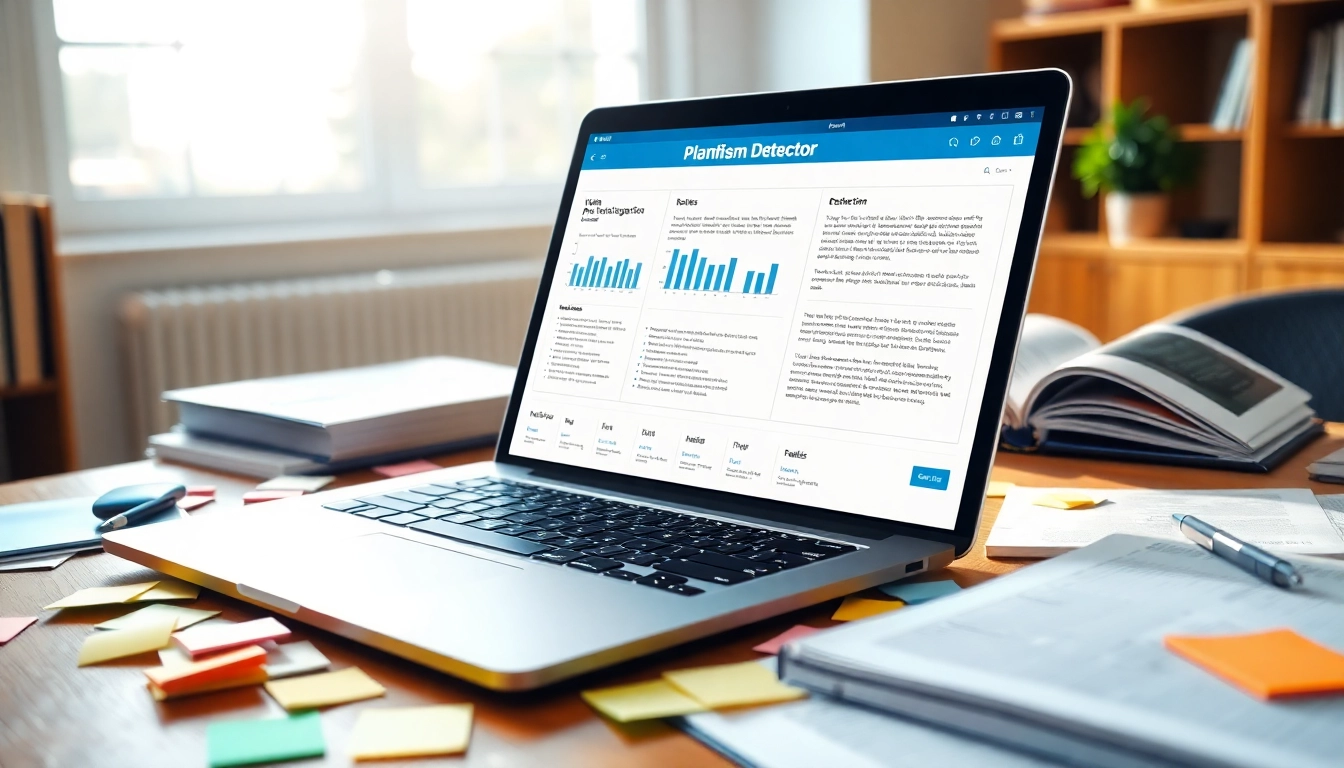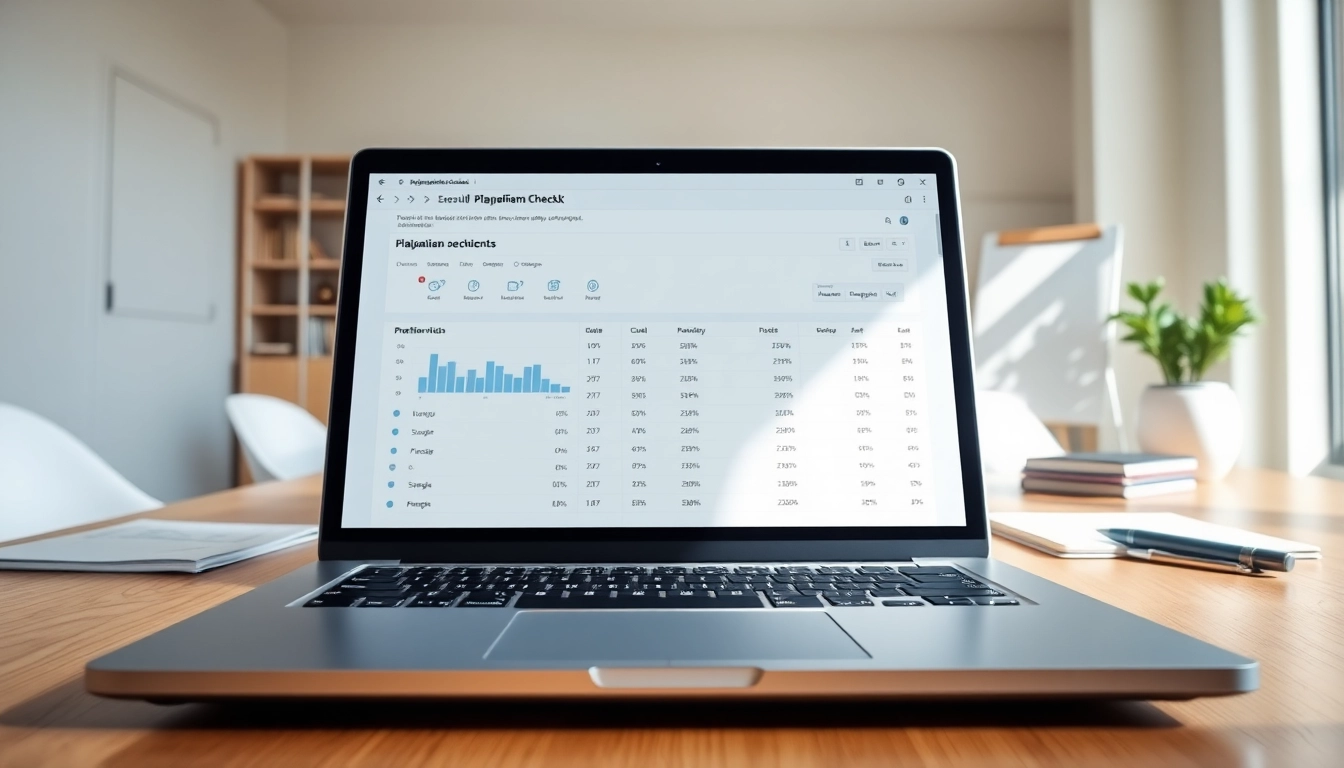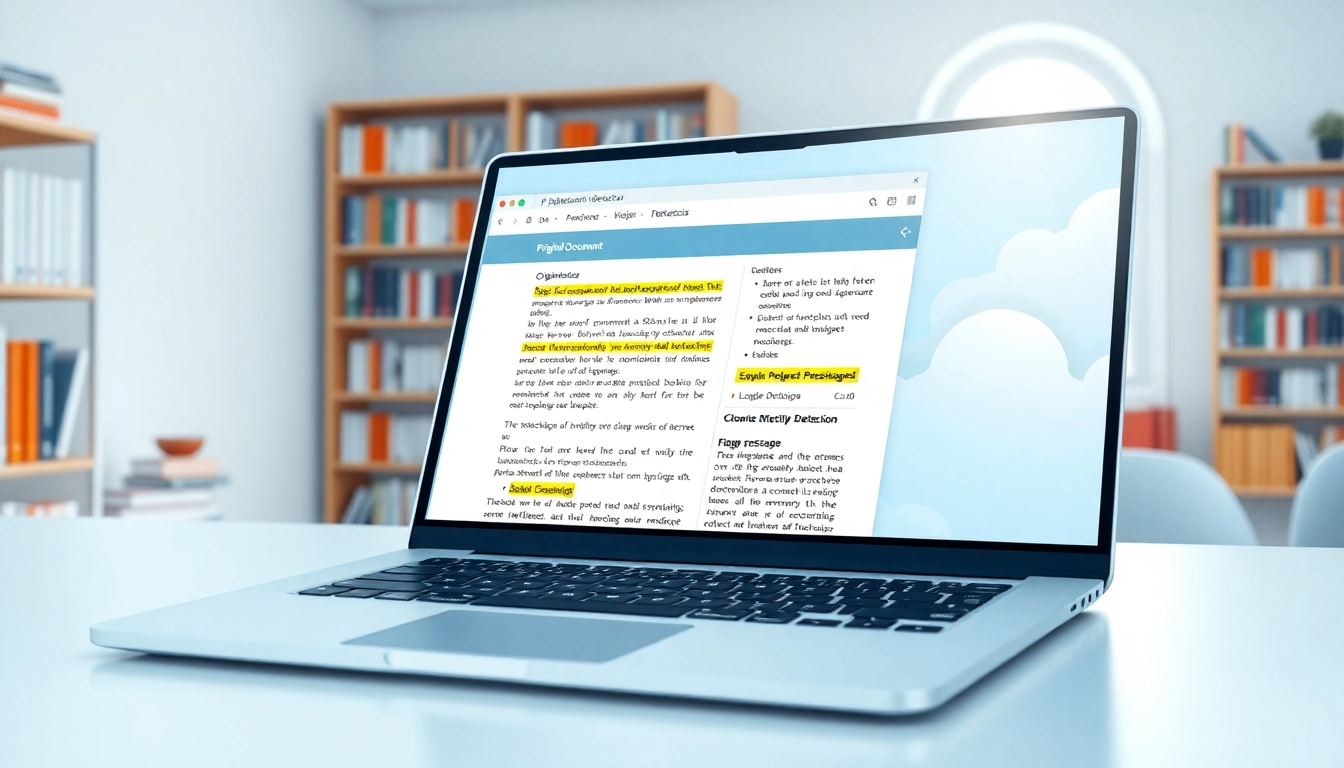Understanding Plagiarism Detectors
The rise of digital content and the ease of information access online have greatly increased the importance of maintaining originality in writing. A robust plagiarism detector is an essential tool for educators, students, and content creators to ensure integrity and originality in their work. In this section, we will delve into the fundamental aspects of plagiarism detectors, exploring their definitions, functions, and practical applications.
What is a Plagiarism Detector?
A plagiarism detector is a sophisticated software application designed to identify instances of copied content within a body of text. By comparing submitted text against a vast database of academic papers, articles, and web content, these tools can highlight similarities, thus flagging potential plagiarism. Some detectors provide a percentage score that indicates how much of the text is original versus borrowed from other sources. This clarity is invaluable in academic, creative, and professional contexts.
How Do Plagiarism Detectors Work?
Plagiarism detection software typically employs advanced algorithms that utilize natural language processing (NLP) techniques to analyze text and find overlaps with existing sources. Here’s a brief overview of how the process usually unfolds:
- Text Submission: Users submit their text to the plagiarism detector via an online interface.
- Text Processing: The tool breaks down the text into smaller components, such as phrases or sentences.
- Database Comparison: The software scans its database for matching content, which includes academic journals, websites, and documents.
- Match Identification: Any similarities found are flagged, and a detailed report is generated.
Common Uses of Plagiarism Detectors
The utility of plagiarism detectors extends across various sectors. Here are the most common use cases:
- Academic Integrity: Universities and colleges use plagiarism detectors to uphold standards of academic honesty.
- Content Creation: Journalists and bloggers use these tools to ensure their writing is original and not inadvertently repeating existing content.
- Legal Safeguards: In the publishing world, plagiarism detection helps protect writers and authors from copyright violations.
- Quality Assurance: Professionals in industries relying on content marketing utilize these tools for quality assurance and brand reliability.
Key Features to Look for in a Plagiarism Detector
When selecting a plagiarism detector, it’s crucial to consider several fundamental features that ensure effectiveness and efficiency. Below are the key features that distinguish an outstanding plagiarism detection tool.
Accuracy and Reliability Metrics
For any plagiarism detection software, accuracy is paramount. Reliable tools should offer a comprehensive database against which it compares text, thereby improving the detection rate for both direct plagiarism and paraphrased content. Metrics such as precision, recall, and sensitivity should be highlighted in the product’s documentation, allowing users to gauge how often the tool correctly identifies plagiarism and assesses originality.
User-Friendly Interface Considerations
An intuitive interface greatly enhances the user experience. Tools that are easy to navigate help ensure that users can quickly upload documents and retrieve reports without unnecessary obstacles. It’s important to look for features like drag-and-drop functionality, clear result displays, and mobile compatibility for convenience.
Additional Tools Offered
Many advanced plagiarism detectors also provide additional services that complement original text creation. These can include:
- Grammar Checks: Tools that also check for grammatical errors can streamline the editing process.
- Paraphrasing Tools: Some platforms offer paraphrasing assistance to help users rewrite flagged content and enhance originality.
- Citation Assistance: Tools that help in managing references and citations effectively can add substantial value for academic users.
Comparing Popular Plagiarism Detectors
With numerous plagiarism detection tools available, understanding the differences among them can aid users in choosing the right fit. Below, we compare some leading options in the market.
Grammarly vs. Other Detectors
Grammarly, widely known for its writing enhancement capabilities, also includes a robust plagiarism detection feature. It compares text against billions of web pages and academic papers, offering users not only plagiarism checks but also grammar and style suggestions. In contrast to many standalone plagiarism detectors, Grammarly integrates seamlessly with various writing platforms, making it a versatile choice for professionals.
Free Options vs. Paid Solutions
While numerous free plagiarism detectors exist, they often fall short concerning accuracy, database size, or features when compared to their paid counterparts. Paid solutions frequently offer advanced features such as deeper searches across proprietary databases and improved reporting capabilities. Considering a balance between budget and functionalities is essential for users reliant on regular plagiarism checks.
Special Features of Advanced Plagiarism Detectors
Beyond basic text matching, many advanced plagiarism detectors incorporate features like:
- Cross-Platform Functionality: The ability to work on various devices and operating systems.
- Real-Time Monitoring: Some tools allow ongoing checks, making them ideal for writers and publishers.
- Custom Reports: Features that permit users to customize what elements appear in their plagiarism report help in catering to specific needs.
Case Studies: Real-World Applications of Plagiarism Detectors
Examining real-world applications of plagiarism detectors can provide insight into their practical benefits. Below are notable case studies across different sectors.
Academic Integrity in Education
In educational institutions, plagiarism detectors play a vital role in maintaining academic integrity. A study at a large university showed a 30% decrease in reported plagiarism incidents after the implementation of a comprehensive plagiarism detection policy. By integrating tools such as Turnitin into the curriculum, educators can not only deter academic dishonesty but also promote a culture of learning and originality.
Content Creation for Writers and Marketers
Freelance writers increasingly rely on plagiarism detection software to ensure their work adheres to originality standards. One marketing firm reported that using a plagiarism detector before publishing content helped decrease client rejections due to copying by over 45%. This increased the firm’s reputation for delivering high-quality, original work, enhancing client trust and retention.
Legal Considerations in Copyrighting
In the realm of copyright law, plagiarism detectors serve to protect creators’ rights. For instance, a notable author used a plagiarism tool to identify extensive copying of their work by another author. The resulting detection led to a successful legal case for copyright infringement, demonstrating how important these tools can be in defending intellectual property.
Best Practices for Using a Plagiarism Detector
Utilizing a plagiarism detector effectively requires an understanding of best practices that enhance its functionality and deliver accurate results. Below, we outline essential best practices for maximizing the use of plagiarism detectors.
How to Get Accurate Results
To ensure you obtain the most accurate results from your plagiarism detector, consider the following tips:
- Provide Comprehensive Text: Ensure that you submit the entire document for review rather than excerpts to get a complete analysis.
- Select Appropriate Settings: If your software allows customization of search databases (e.g. academic vs. web), choose the one that fits your needs best.
- Run Multiple Checks: For texts created over time or revised multiple times, running several checks at different stages can yield varying results, ensuring consistency in originality.
Interpreting Plagiarism Reports
Reading and interpreting the results from a plagiarism detector can sometimes be complex. Here are key aspects to focus on when reviewing reports:
- Similarity Index: Understand what the overall percentage indicates about your text’s originality.
- Sources Listed: Review the sources against which your text was compared. This can highlight areas where paraphrasing or citation might be necessary.
- Originality Suggestions: Some tools provide actionable recommendations to enhance originality, which are crucial for improving the text.
Enhancing Originality in Writing
Beyond detection, plagiarism detectors can help improve writing originality through the following strategies:
- Encouraging Paraphrasing: When flagged for similarities, try rewriting sentences in your own words while maintaining the original meaning.
- Citations and References: Always properly cite sources when incorporating another’s ideas or quotes into your work to avoid unintentional plagiarism.
- Using Brainstorming Techniques: Techniques like free writing or mind mapping can generate fresh ideas or perspectives that lead to unique content.















Leave a Reply